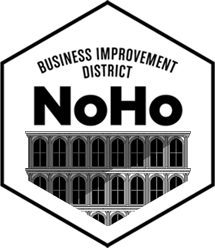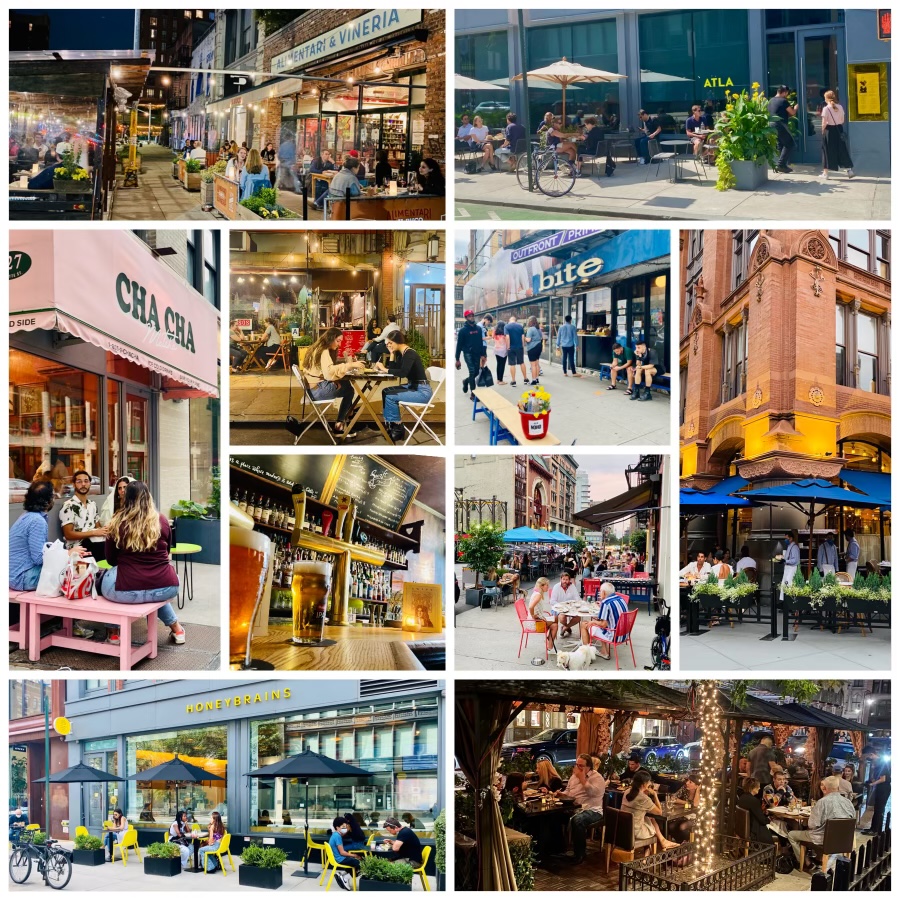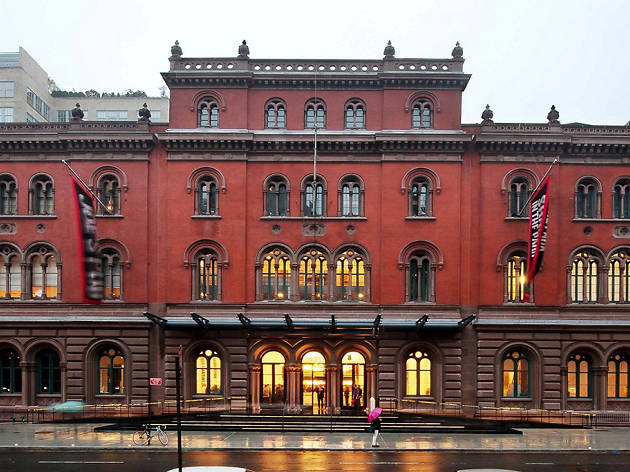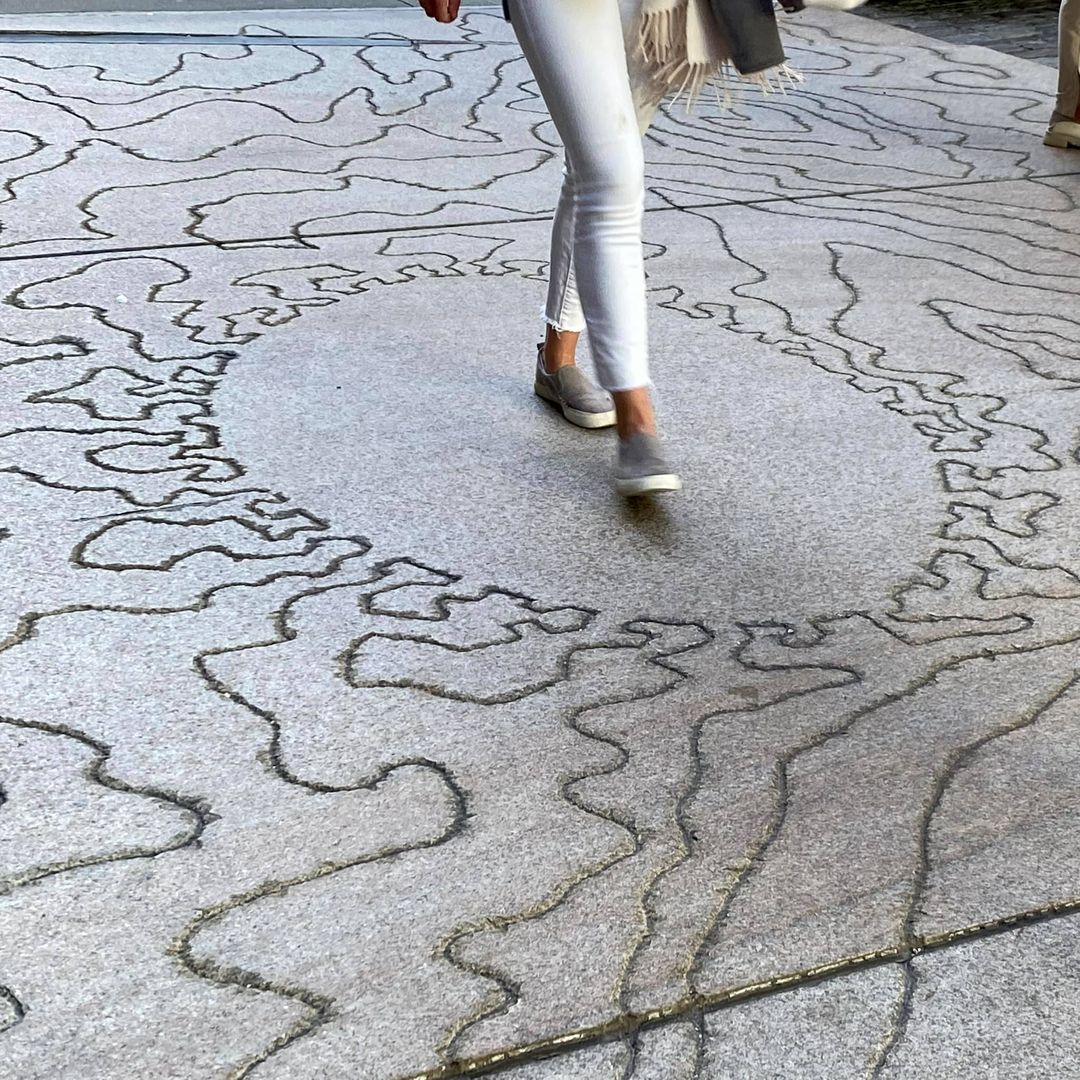
Meet Dawn Fichot, founder and CEO of Racked Stretch, a company that uses dynamic stretching to boost mobility and help people feel better in their day-to-day life. Learn how life events led a marketing professional to uncover a wellness need that wasn’t being addressed by any other business and how she brought that to NoHo. Interested in trying Racked? They’re currently offering a Summer Fling Special! It’s the perfect way to test out the company at a lower price and lower commitment. Get 200 minutes of stretching for $296, and use code NOHO25 at checkout for an additional $25 off! More info here.
- Why don’t you start off telling us a little about yourself and your background?
For much of my career, I worked at HSBC, and bounced around Toronto, New York (including NoHo at times), and their headquarters in London, where I eventually became global head of campaign management. About ten years ago I developed Hodgkin’s Lymphoma. I’m completely fine now and thankfully there was never a real question about whether or not I’d recover, but something they don’t tell you about chemotherapy and radiation treatments is that you lose all your mobility as a side effect. Your tendons, ligaments, and muscles get so tight. I grew up dancing and playing sports and was active as an adult, so mobility had never been an issue for me. After my treatment was over though, I got my strength and endurance pretty quickly, but just could not get my mobility back.
I suffered for years, and couldn’t even touch my knees, much less my toes. Add on working ten hours a day and frequent international travel, plus working out a lot and I was in constant pain all the time. I remember one day sitting on the floor of my London apartment and I tried to stretch and broke down crying in frustration.
This was around the start of the boutique fitness craze, and I loved Soul Cycle, especially with my favorite instructor. I’d been doing to her for years, and one day she was laying into the class about how people don’t stretch enough and how that makes soreness worse after the class. It was a lightbulb moment that everybody needs this. Why I had no mobility was a very personal problem, but I looked around the room and everybody was nodding in agreement. In that class, I saw the potential of people paying to get stretched.
- And how did you take that and turn it into opening up Racked?
I couldn’t let go of the idea, because at that time there weren’t any stretching services. I understood the market really well, but knew I needed somebody to help with the treatment and training side of things. I started booking appointments with different kinds of practitioners – massage therapists, acupuncturists, personal trainers, if you can think of it I probably tried it out. I was referred to Dr. Keren Day, and it was a great fit. She’s a chiropractor, and began her career in sports medicine working for professional teams here in NYC, and then moved towards a more functional medicine side. It was a great, holistic approach, which is exactly what I’d been looking for.
We spent a year building out our protocols and beta tested with over one hundred people, from seventeen to eighty, some healthy and some with illnesses and injuries. You name a condition, and we probably had somebody with it beta test for us. The next step was figuring out how we translate the method to people who weren’t doctors, but could implement this method at a consistent, high-level. This was through 2017, and in 2018, we began offering corporate wellness and finally opened our first studio in Mile High Run Club in Nomad in June 2018, with Mile High Noho following in September 2019.
- That brings up an interesting point, stretching touches on a lot of different aspects of health, and the concept is relatively new, so how do you find your stretchers? Is that what they’re called?
We call them stretchers, Rackers, or Rack Stars. From the start, we had an idea of who we were looking for – people with some kind of certification, whether that’s personal training, kinesiology degrees, or something like that, and that’s what we put out on the Internet when we were hiring. Beyond the credentials though, some people just have a drive to help people and take care of others that we look for from the start. We also have a lot of people who are nerdy the right way and want to know about the body and how it works. One of our most consistent indicators that shows us an individual will be a good fit is if they have an anatomy coloring book. It’s so weird, like who has one of those? It’s a surprising number of people! We find most people who make it through our training program and begin working for us started with an anatomy coloring book. The actual training process, where our Rack Stars learn our method is one hundred hours.
- Tell us about the Racked process and how it works?
We are, I believe, the only stretching concept in the US, possibly the world, that was founded by a doctor. We’re deeply based in science, and our methods are grounded in research. It’s an end-to-end method at Racked, and from the second you walk in the door, there’s little details like the smell that are designed to keep your nervous system calm. It triggers a response in your brain that ‘this is time to relax.’ We did tons of research on colors, and the color we picked is reminiscent of the deep forest, and green is shown to be a deeply relaxing color. Before we begin stretching, we do ‘traction’ and create space in your body that we can stretch into. It’s a little like being pulled apart on a torture rack, hence the name of the company. Although we don’t torture anybody, we just give you that sense of space in your body.
After that, we do a little warm-up with a spiky stick roller or torture device, depending on how you look at it. It’s a love-hate tool, but it helps orient your body to the stretching process, it boosts blood flow and helps make your soft tissues, muscles, and fascia more relaxed and much more elastic. We utilize biomechanics and work from the outside in. I like to think of it as a tangled piece of jewelry, you have to start with the little knots on the outside and work your way to the bigger ones inside. This also means we’re working against blood flow, which helps the detox process. Your heart pumps to the extremities, and we help blood and lymph fluid get back to the center and boost circulation.
- Can you expand a little on why it’s so important for the body to stretch?
It’s so important to stretch, and our clients tend to fall into about three categories. About a third are super gung-ho, really into fitness, and use us to help better perform in triathlons, marathons, and other sports events. We help through training, increase range of motion so they can push harder in workouts, and we help prevent soreness and injury. A little under half of our clients are just normal New Yorkers, with all the chaos that comes from city life and the toll NYC life takes on you. These people just want to feel good and solve the low level stress that wears on your body here. They just want to ensure they don’t lose mobility or long term injuries. The last little bit of clients come in as specific problems arise, maybe they slept weird and have a pain they want resolved right away, so they just come in that day. One of the beauties of stretching is that it can do all these things for the body, and more.
- Changing gears a little bit, let’s talk COVID. The pandemic was extraordinarily difficult for personal services, fitness, and for small businesses – really a perfect storm for being hard for Racked. Can you tell us about the challenges of surviving?
Surviving is a great way to put it. We certainly weren’t thriving in any way, it was a matter of existing and making sure our team and clients were getting everything they needed out of us. We put our team first. Not just how can we prevent people from getting COVID and making sure they get paid, but how do we make sure people are okay and not going crazy? We very quickly started translating what we did in the studio into an online class format. We did tons of workshopping with online-class experts to figure out how we can make these classes engaging in a virtual format. Later on, we introduced our on-demand service, that’s now become a permanent part of Racked.
We were in this holding pattern of online only for about a year, and then we were finally able to open up last year. One of the helpful things in COVID is that we don’t have standalone studios, so we didn’t have a lease of our own to contend with. I’m a collaborative, partnership-driven person, and our business is set up that way. Mile High Run Club were incredible partners who really supported us and helped us make it to the other side. We had a few stops and starts. We first tried to open back up in November 2020, and it just didn’t feel safe yet. I didn’t want to ask my employees to do something I myself wouldn’t feel comfortable doing, and we still require mask-wearing and full vaccinations in our space. It’s something our clients mostly really appreciate for many reasons.
The waves of COVID have been tough to navigate, and made me a little more risk-adverse than I normally am. Things will start going well, we get a good base of regulars, and then another wave hits and you’re back to square one. All of a sudden, half your clients are calling out because they have COVID or have been exposed, and that’s what you want them to do but it’s hard. You start to get overly-cautious when the rug keeps getting pulled out from under you so many times. Hopefully, we are really getting to the end of this and we don’t have another big wave.
- You mentioned earlier, that people who love helping people feel better make the ideal Rack Stars, and helping people overcome mobility issues is a wonderful goal for a business, and it must be really rewarding. Can you talk about this side of running things a little more?
You know, going back to the first dark year of COVID, once we knew everybody in our team was okay, we questioned if we should keep going. Every time I was questioning if it was worth it, I’d have a client tell me they touched their toes for the first time in ten years. There was one woman with terrible back pain who was consistently taking our online classes, and she couldn’t see her regular chiropractor during COVID. She was terrified of the pain getting worse during the pandemic. She stretched with us almost every day, and I asked her five months into her joining our classes if she’d been back to her chiropractor now that medical offices were back online. She told me that she realized she hadn’t even thought about going back because she wasn’t having pain anymore. Hearing these kinds of stories when I really needed to the most, when we were only virtual, meant a lot to me. We hear these things in the studio all the time, and whenever it happens, it’s just like yep, we’ve got to keep going.
- What’s your favorite stretch?
It kind of changes on the day, but the one that’s made the biggest difference in my life, and for most of our clients, is a stretch we do on your psoas. It’s hard to do on your own, but the psoas muscle is so important. It connects the upper part of your body to the lower part of your body, and the front to the back. It’s a really important muscle, and every time you lift your leg up to walk or run, it’s used. Sitting at a desk all day contracts the psoas, so it doesn’t really get a chance to release or stretch out. When Keren, my cofounder, first did that stretch on me when we were developing our method, it changed everything for me. Since I started focusing on that area, my lower back pain is almost gone, and I feel like I can try any physical activity.
- What’s your favorite thing about NoHo?
I’ve lived in NoHo and other places nearby over the years. I think what makes it so special is that it’s a place where people live and work and go out, it’s not just one thing, and it all goes together so seamlessly. People who have businesses here or live here don’t take it for granted, everybody in the community knows it’s a special place and tries to live up to it. Plus, you’ve got some of the most special places in the city like Great Jones and Bond Street that you don’t get anywhere else in the city. It almost feels like a movie set because it’s so perfect, but nothing’s fake.
- Any other favorite NoHo businesses?
There are a lot, it’s just such a unique neighborhood. Honeybrains has a great mission and great people behind it, so it’s got an ethos like Racked and has a great environment to work in. I’ve done a lot of work with ORA, and love their approach of helping people feel better and have a great sanctuary of a space. I’ve got a heart for Little Atlas Cafe. It’s pretty much as much of a hole in the wall as it can be without being an actual hole in the wall. Everything is made to order, and the man that works there is so nice and he’s got a great character that’s special in NoHo. He’s a gem in the neighborhood, and his food is so good without being expensive.




